Step 1:- Singeing and De-sizing
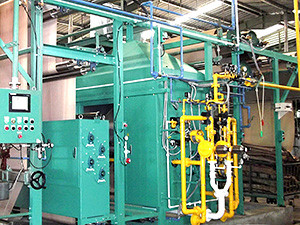
In fabric processing the very first step is Singeing and De-sizing of the fabric. Singeing is where fibres, yarn ends and fuzz on fabrics are burned off of the surface of the cloth. A gas flame is passed over the fibre fast enough to burn the parts that are protruding without burning the cloth. De-sizing is where sizing materials such as starch and chemicals, which are coated on the fabric before the weaving process, are removed. If these materials are not removed from the fabric they can act as a resistant towards dye and chemicals during wet processing.
Step 2:- Bleaching
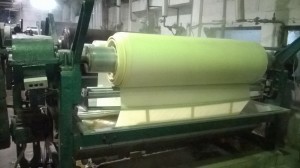
The second step of the process is Bleaching. Raw fabric known as greige fabric, has colour, odur and impurities. This fabric is not suitable to manufacture items such as clothing, so add-ons such as pesticides, fungicides, worm killers, sizes, lubricants and other materials are used on the fabric. The removal of these materials is called Bleaching. Bleaching is classified into two parts known as Oxidative Bleaching and Reductive Bleaching. Oxidative Bleaching is generally used on natural fibres like cotton and wool using sodium hypochlorite, sodium chlorite or hydrogen peroxide, while fibres such as polyamides are bleached with the Reductive Bleaching method using sodium hydrosulphite.
Step 3:- Mercerising
Step three of the process is Mercerization. This is where typically cellulosic materials such as cotton fabrics are treated with a caustic solution (NaOH). This is done to improve fiber strength, shrinkage resistance, luster and dye affinity. It is one of the most important steps of finishing cotton material. It causes the fibres of the fabric to swell which is why it is stronger and easier to dye. Devised by John Mercer in 1844 after whom the process is named, it changes the chemical structure of the cotton and also gives it a softer feel. Mercerization of fabric is broken into three parts which are Chainless Mercerization (Roller Mercerization), Chain Mercerization (Stenter Mercerization), and Batch-up Mercerization.
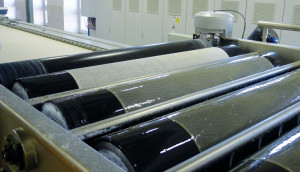
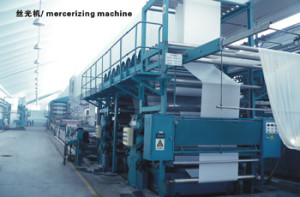
4. Step 4 A:- Cotton Dying
The first part of step four is Cotton Dyeing. Different types of dye are used to dye cotton. Some of them are vat dyes, modern synthetic reactive and direct dyes. Two of the most used processes for dyeing cotton are Piece Dyeing and Yarn Dyeing. Piece Dyeing is used for fabrics that will be one single colour. The dry cloth is passed through hot dye solution which is then passed through special padded rollers that evenly distribute the colour and removes extra liquid. Yarn Dyeing is a process which is used on the yarn before weaving to make various patterns such as gingham checks, plaids, woven stripes and other effects.
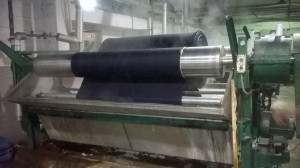
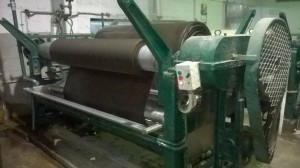
Step 4B:- Polyester Dying
The second part of step four is Polyester Dyeing. Disperse dyes are required when dyeing polyester fabrics as any other types of dye leaves the colour of polyester unchanged. Disperse dyes are organic colouring substances that do not have ionizing groups and have low water solubility. Polyester has a negative charge on its surface making it an extremely difficult fabric to dye, this negative charge can’t be reduced by any way other than that of the use of disperse dyes which are non-ionic dyes and are not influenced by the surface charge. These special dyes are added to the water along with a surface active agent which forms an aqueous dispersion and breaks up into individual molecules and is absorbed into the fibre surface.
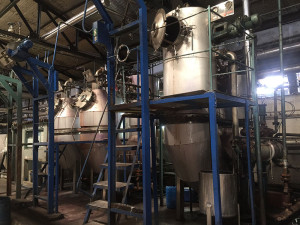
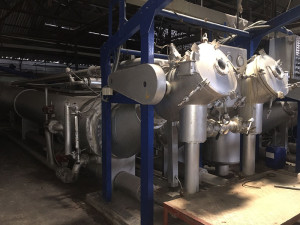
Step 4 C:- Towel Dying
The third and final part of step four is Towel Dyeing. The most commonly used types of dye for towels are reactive dyes which are dyes that belong to a class of highly coloured organic substances. These dyes attach themselves by a chemical reaction which forms a bond between the molecule of dye and fibre. Two types of machines are used for towel dyeing, The Winch through which the fabric is fed in rope form and the pad batch where the fabric is fed in an open width form. Dried uncut rolls of towel fabric are immersed in a vat of dyes after which it is removed and passed between two heavy rollers forcing the dye into the fabric. The towel fabric then undergoes steaming to set the colour.
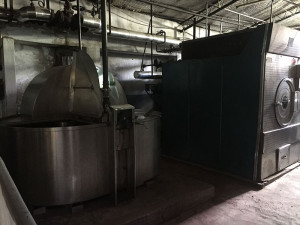
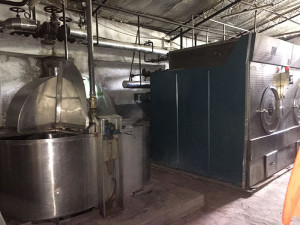
Step 5:- Printing
Step five of the process is Printing. This is the process of applying colour to fabric in different designs. Printing is closely related to dyeing, but the significant difference between the two is that in dyeing the entire fabric is covered in one colour while in printing one or more colours are applied only to certain parts in various patterns. Printing colourants are special dyes that are thick enough to stop it from spreading beyond the design. Three techniques are used for printing which are Direct, Discharge and Resist printing. Direct printing is the most common technique where a pattern is produced by applying dye on the fabric in paste form. In Discharge printing, the fabric is dyed in one colour and then a chemical is used to destroy the colour in designated areas. This is now one of the least used techniques. Resist printing is where resist paste is applied on the fabric and then dyed. The dye colours only the areas where the paste has not been applied.
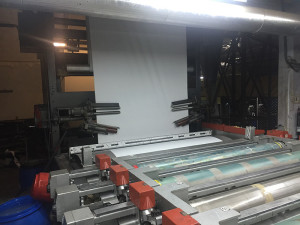


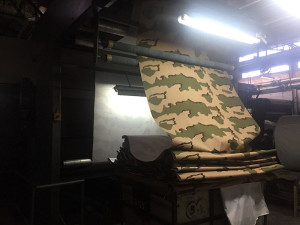
Step 6:- Washing Process
Step six is the Washing Process. The fabric needs to be washed to remove fabric insoluble matters and other impurities. The washing process is performed after de-sizing, bleaching and mercerization and also after dyeing to complete the process and remove dyestuff that has not been fixed. During the use of vat dyes or disperse dyes, washing removes insoluble pigments. It is a chemical-physical process that includes several steps. Transfer of matter plus energy by mixing, transfer of the liquor to the material, separation of impurities and emulsification, removal of liquor from the fibre and the final step which is drying. These steps are usually done at the same time.
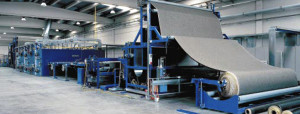
Step 7:- Finishing process
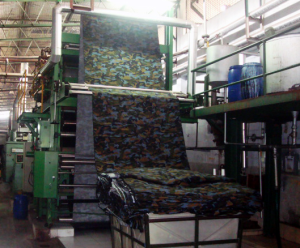 Step seven is the Finishing Process. This refers to the conversion of fabric into a usable material, more specifically it refers to any process performed after the dyeing of the fabric. Some finishing techniques include Raising where fibres on the surface of the fabric are lifted by sharp teeth to provide softness and warmth. Calendering involves the fabric being passed through heated rollers to create smooth, polished or embossed effects. Chemical Finishing is when chemical treatments are applied especially to cotton fabrics to make it crease resistant and of low flammability. Shrinking refers to when the fabric is forced to shrink thus creating a fabric where shrinking is minimal after laundering.
Step seven is the Finishing Process. This refers to the conversion of fabric into a usable material, more specifically it refers to any process performed after the dyeing of the fabric. Some finishing techniques include Raising where fibres on the surface of the fabric are lifted by sharp teeth to provide softness and warmth. Calendering involves the fabric being passed through heated rollers to create smooth, polished or embossed effects. Chemical Finishing is when chemical treatments are applied especially to cotton fabrics to make it crease resistant and of low flammability. Shrinking refers to when the fabric is forced to shrink thus creating a fabric where shrinking is minimal after laundering.
Step 8:- Inspection & Packing
Step eight in fabric processing is Inspection and Packing. This step is an important aspect of the process. Inspection of finished fabric includes looking for critical, major and minor defects before the fabric is packed. Critical defects include aspects such as sharp points or edges. Major defects are overall product failure and can also include holes or broken stitches. Minor defects include aspects that won’t reduce product usability such as loose threads. The inspection process ensures the safety and quality of the fabric so that fabric of low quality is not sent out. Special packaging machinery is used to pack the fabric properly and prepare it for the final step.


Step 9:- Stores & delivery
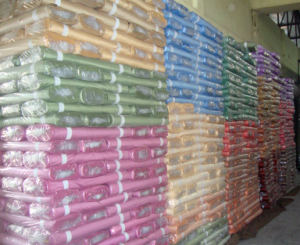 The final step in the process is that of Stores and Delivery, which is how the fabric is stored in a certain way to preserve the quality of it and prepared for safe delivery to customers. Stores keep the finished fabric according to colour or the type of fabric making it easier and faster for orders to be delivered in a timely manner. The fabrics are stored in warehouses and loaded in trucks and delivered to its destination.
The final step in the process is that of Stores and Delivery, which is how the fabric is stored in a certain way to preserve the quality of it and prepared for safe delivery to customers. Stores keep the finished fabric according to colour or the type of fabric making it easier and faster for orders to be delivered in a timely manner. The fabrics are stored in warehouses and loaded in trucks and delivered to its destination.
